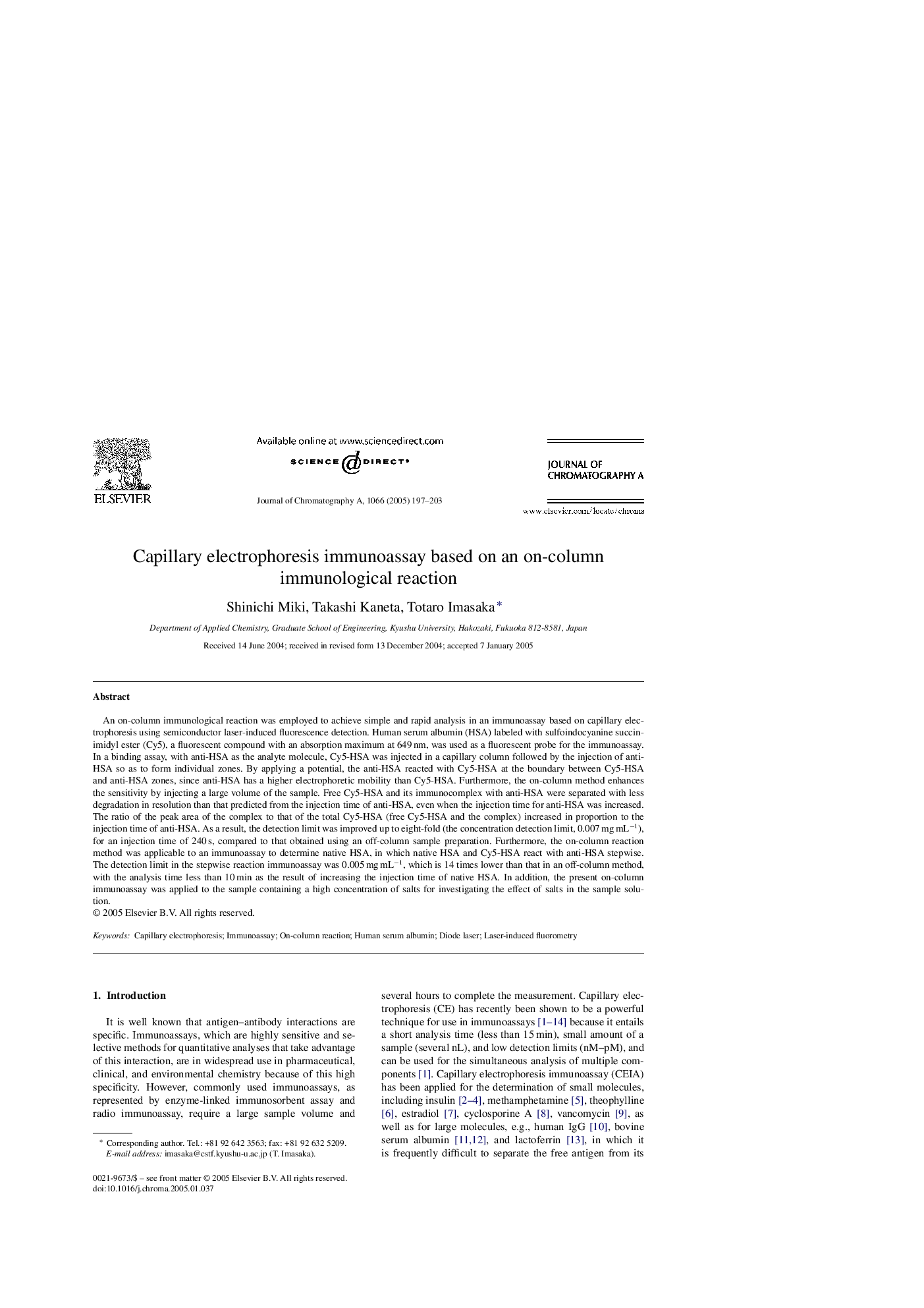| Article ID | Journal | Published Year | Pages | File Type |
|---|---|---|---|---|
| 9749305 | Journal of Chromatography A | 2005 | 7 Pages |
Abstract
An on-column immunological reaction was employed to achieve simple and rapid analysis in an immunoassay based on capillary electrophoresis using semiconductor laser-induced fluorescence detection. Human serum albumin (HSA) labeled with sulfoindocyanine succinimidyl ester (Cy5), a fluorescent compound with an absorption maximum at 649 nm, was used as a fluorescent probe for the immunoassay. In a binding assay, with anti-HSA as the analyte molecule, Cy5-HSA was injected in a capillary column followed by the injection of anti-HSA so as to form individual zones. By applying a potential, the anti-HSA reacted with Cy5-HSA at the boundary between Cy5-HSA and anti-HSA zones, since anti-HSA has a higher electrophoretic mobility than Cy5-HSA. Furthermore, the on-column method enhances the sensitivity by injecting a large volume of the sample. Free Cy5-HSA and its immunocomplex with anti-HSA were separated with less degradation in resolution than that predicted from the injection time of anti-HSA, even when the injection time for anti-HSA was increased. The ratio of the peak area of the complex to that of the total Cy5-HSA (free Cy5-HSA and the complex) increased in proportion to the injection time of anti-HSA. As a result, the detection limit was improved up to eight-fold (the concentration detection limit, 0.007 mg mLâ1), for an injection time of 240 s, compared to that obtained using an off-column sample preparation. Furthermore, the on-column reaction method was applicable to an immunoassay to determine native HSA, in which native HSA and Cy5-HSA react with anti-HSA stepwise. The detection limit in the stepwise reaction immunoassay was 0.005 mg mLâ1, which is 14 times lower than that in an off-column method, with the analysis time less than 10 min as the result of increasing the injection time of native HSA. In addition, the present on-column immunoassay was applied to the sample containing a high concentration of salts for investigating the effect of salts in the sample solution.
Related Topics
Physical Sciences and Engineering
Chemistry
Analytical Chemistry
Authors
Shinichi Miki, Takashi Kaneta, Totaro Imasaka,
